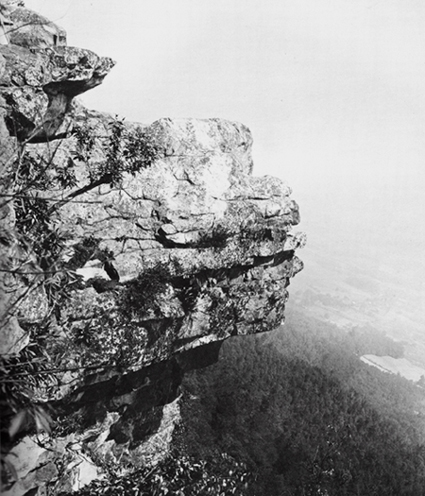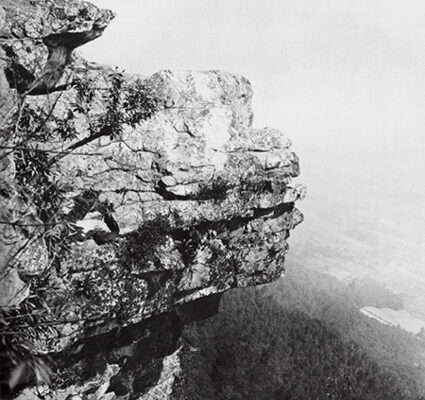Recently, I spotted an eye-catching news item that I had not heard before that was reported in several 1882 newspapers around the country. Something noteworthy happened in our region 128 years ago this past January 25.
According to the source, the roughly 750 townspeople of Johnson City experienced an event that left them helpless and reeling with fright. That morning, a powerful crash and terrifying rumbling noise was heard coming from Buffalo Mountain, caused by a major rockslide that occurred on the southeast terminus of the mountain. The noise could be heard 30 miles away. Panic-stricken inhabitants living in close proximity to the mountain scampered from their dwellings seeking safety, fearing that an earthquake was besieging the East Tennessee countryside. A number of folks gathered together to pray for deliverance from the falling mountaintop.
After the residents regained their composure, they assembled in small groups and gazed toward Buffalo Mountain, but something was notably different. The massive rock formation known as White Rock Summit, located several hundred feet above the valley, was missing from view. According to the news releases, the picturesque lofty rock, a thing of pride for the mountaineers, was a popular attraction for local residents and visiting travelers who ascended the mountain to view stunning valleys and pristine streams that could be observed from its lofty perch. On Sunday mornings, the massive rock became a church for Reverend Harry Anderson, a local black preacher, who conducted church services there for his congregation.
Stunned area residents stared at the site where the impressive deference of nature had previously stood and marveled how something so majestic that had stood for eons could descend so abruptly into a heap of strewn trees, rocks and earth. One newspaper picturesquely stated, “The summit around where the clouds loved to gather of their own accord no more holds aloft toward the sky its white-capped peak.” An earthquake was not the cause of the devastation as initially thought. Instead, it resulted from weeks of constant rain that soaked and flooded a large portion of East Tennessee. Weather reports that month indicated that it had rained continuously for all but two days.
Two to four thousand men along the Cumberland River were temporarily forced out of work because of widespread flooding. Johnsonville on the Tennessee River was virtually destroyed by the inundation. Much damage was done to houses and mills along the creeks near Knoxville, including a major landslide east of Knoxville that created worrisome concerns for all nearby mountain roads. Water level in the Tennessee River rose so high that it threatened to obliterate the bridges of the Nashville, Chattanooga and St. Louis Railway.
My immediate reaction to this surprising archival news find was to question it. After all, White Rock is still located on the southeast end of the mountain. My dad and his brothers routinely hiked there in their youth for a day of mountainous recreation. Bob Price wrote an article recently concerning his memories of climbing there. How could these reported news accounts possibly be true?

My surmise is that the White Rock we know today atop Buffalo Mountain was once an enormous, impressive rock formation that was clearly visible over a wide area. If all this is true, it is likely the remnant of the 1882 collapse. If anybody can shed further light on this subject, please share it with me for the newspaper.

Comments are closed.